A yen for Chinese zen (part 2): Amanfayun
Jan 09, 2024
Devotees of ancient Chinese scholarly thought and Buddhist teachings will want to make a pilgrimage to Amanyangyun and Amanfayun. Zaneta Cheng ventures to the luxurious wilds of Shanghai and Hangzhou and reports back
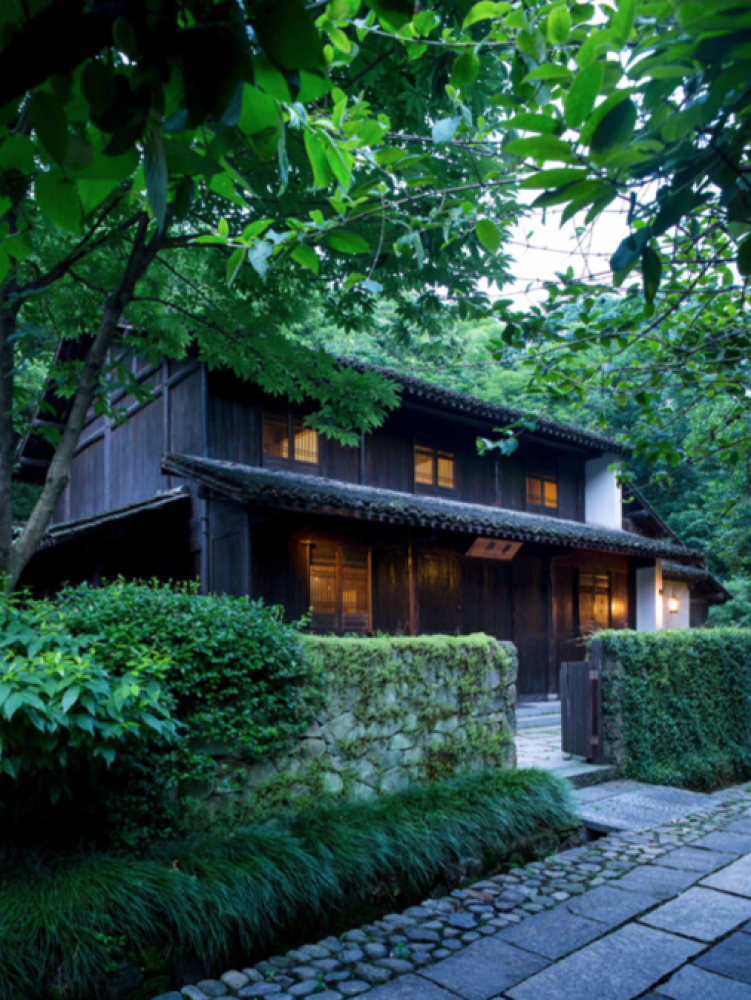
Amanfayun is set in a valley surrounded by seven temples. According to Chinese geomancy, this setup makes the Aman property in Hangzhou one of the most auspicious places to be. The proof is in the pudding because the lush green hills that make up this land have been converted into tea plantations, many of which are owned by the very villagers who used to call the village that Amanfayun has converted into guest villas home. This Aman property is hidden among bamboo groves and indigenous forests, with trees that seem to reach the sky. Think the dancing fight sequences of Crouching Tiger, Hidden Dragon, and the rainy dewy glow of slate roof tiles glimmering between branches and leaves and stone pathways. The entire property is set along one main path – the Fayun Pathway – that extends from the hotel reception all the way down to the first of seven temples in the area.
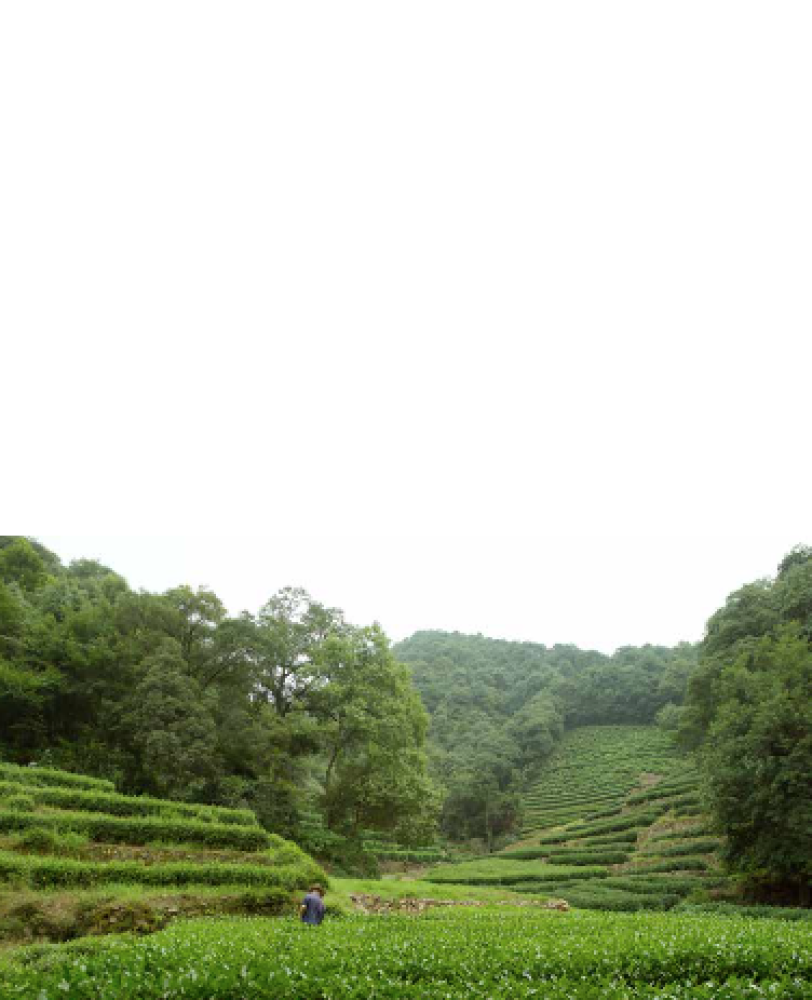
There are 46 guest residences along the Fayun Pathway comprising rooms and suites and bigger suites. Given the location, regulars stay at the resort and frequently make their way to the surrounding temples. So it makes sense that each room is equipped with a copybook, brush and ink for the more devout, the curious and the calligraphy enthusiast to copy Buddhist mantras in their rooms once the sun goes down.
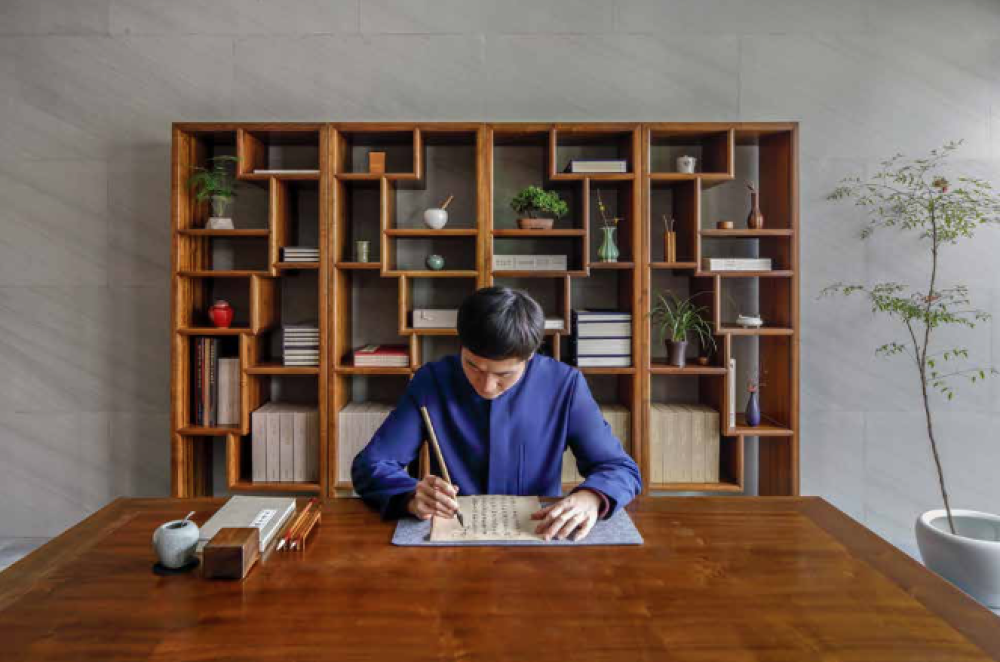
There are no TVs in the rooms. At night the room is dim, to mimic the candlelight that would’ve once been used. The floors are made from the same black stone that lines the floors of the Forbidden City, which, I’m told, cool the room in the summer but trap heat in the winter. Each room has a king-sized bed, many of which are four-poster beds said to be good feng shui, preventing the body’s energy from scattering across the room at night when sleeping. The bathrooms are spacious with twin vanities, and showers and dressing area. Sofas are modern interpretations of Chinese daybeds of yore with a small table in the middle for tea and treats.
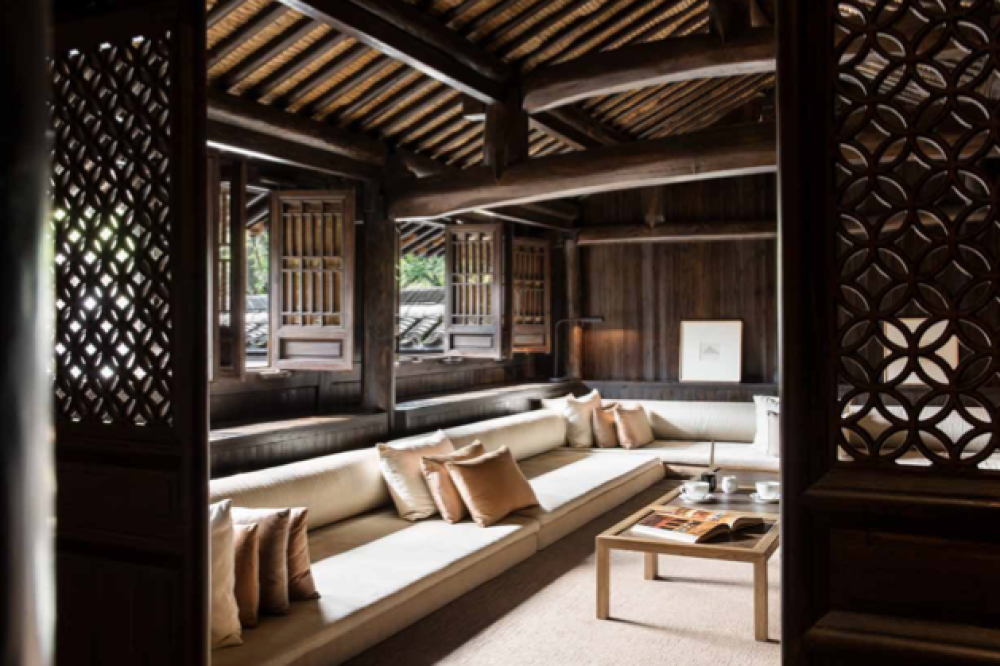
At night, each room, once a home, makes a cosy respite from the activity of the day. Evenings are still and silent and there’s more than enough for anyone to do given the length of the mantra scroll provided
for meditative copying. But in the day, we fling open the windows and doors to let the sun stream in from the courtyards. There’s a sense of community built into what was once essentially its own community with houses facing onto the same courtyards. But given the breadth of activity available, staying in one’s room is a rare occurrence.

Early mornings can be spent exercising with the resident taichi master. It’s a study of bones, I’m told – a practice of activating internal core energy, rather than the fluid dancing steps that are usually seen
on television. There’s also the option of participating in an early-morning lessons chant with the monks at Yongfu Temple, which translates to the Temple of Etermal Goodness is renowned as being one of the most beautiful temples in the area. After bearing witness to the early-morning chants, we take a walk up through the meandering paths and gardens of the temple.
Also see: A yen for Chinese zen (part 1): Amanyangyun
Prayers have a habit of working up an appetite, so very soon it’s off to the Amanfayun Restaurant for breakfast. The eggs Benedict and waffles are apparently crowd favourites, but morning after morning, I opt for the soup noodles, known as pian’er chuan. Served with preserved vegetables, sliced pork and bamboo shoots in soup, this Hangzhou dish has a century- old history and is possibly one of the most fortifying meals I’ve had the pleasure of consuming in the morning. That, and a cup of Jiu Qu Hong Mei tea, also known as Dragon Well Black tea, local to the area, and it’s off to another item on the itinerary.
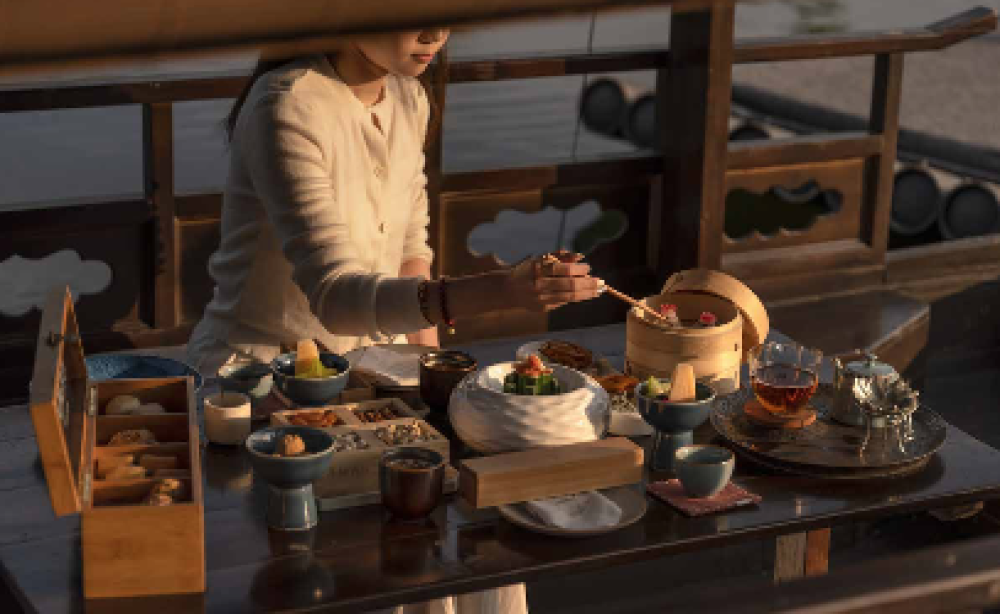
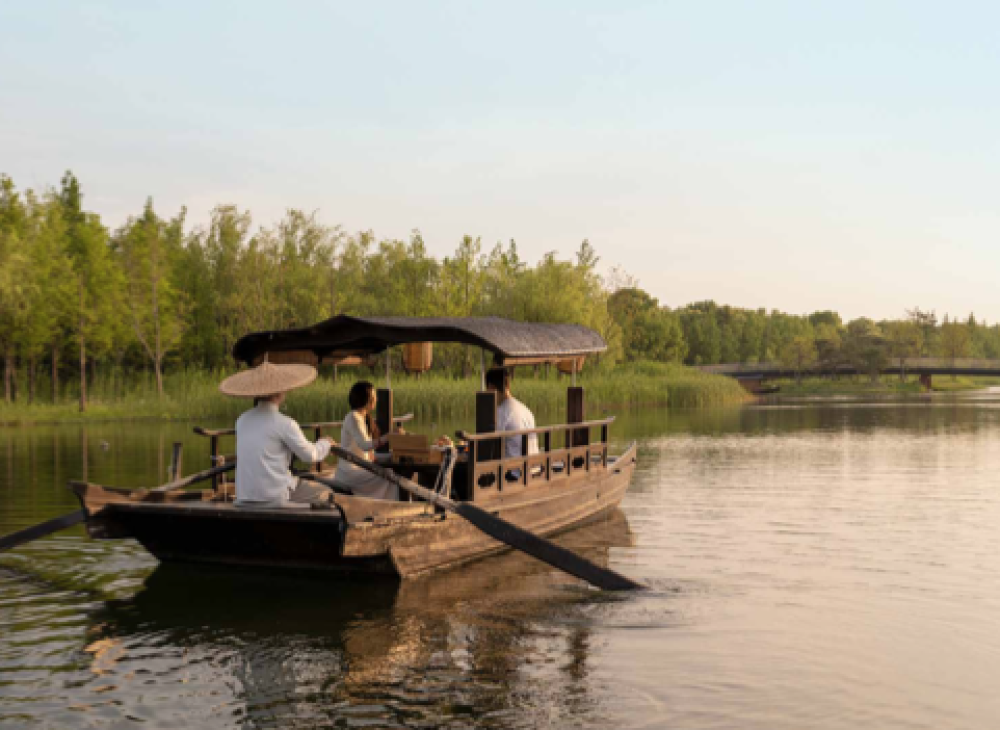
This might be a good time to mention that Amanfayun is but a 15-minute drive to Hangzhou’s famed West Lake. The city was once home to groups of literati inspired by the beautiful views of the lakes and its surrounding mountains. Today, the home of Alibaba attracts something wholly different – a new generation of Chinese influencers. We join in the fun as we walk through the Xiling Seal Art Society. The resort can arrange for a guided tour through the ancient academic society (a wealthy literati social club). Founded in 1904, it’s one of the vestiges of Hangzhou’s past as a confluence point for famous poets, scholars and artists since the 9th century.
Lunch or dinner can be had at any number of the hotel’s eateries. The Amanfayun Restaurant becomes a Western eatery after breakfast with a focus on Italian fare. Its entrance is across grey stone slabs flanked on both sides by man-made ponds. Turtles are out sunbathing as guests walk behind the entryway wall. Perhaps a little less grand but a definite highlight would be Steam House, which offers casual fare such as dumplings and other steamed items but also serves a finer menu should anybody feel more particular on any given evening. While we’re there, there’s talk that a wedding party has taken out the restaurant for a private gathering, which, having tried the food on offer, is a distinctly sound decision.

There’s plenty in the surrounding area to walk off any number of feasts. A small pathway will take guests into the small forest behind the resort. They lead to a set of Buddhas carved into the rock face of the mountains that surround the resort. There are certainly a set of much better-kept carvings further down Fayun Path, but these hidden ones are a sight to behold – less visited by tourists, as can be witnessed by mossy paths and a much more intimate experience.
There’s a kind of mystical, magical quality to many of the experiences at Amanfayun. Perhaps it’s the dew or the early-morning mist that hugs the foliage and the small slate houses. Calligraphy and Chinese painting classes are probably de rigeur at resorts such as this, but at Amanfayun our Chinese painting class is led by a leading monk from a nearby monastery with which the resort is very close. To watch a master at work is a certain kind of special. He teaches us with grace and a deep rooted sense of tranquillity that can humble even the most peacocky of students. A family enters the hall where class is taking place near the end of our session and we find out that they’re hosting their wedding at the resort and without words, he writes two sets of well wishes on red paper for the couple.
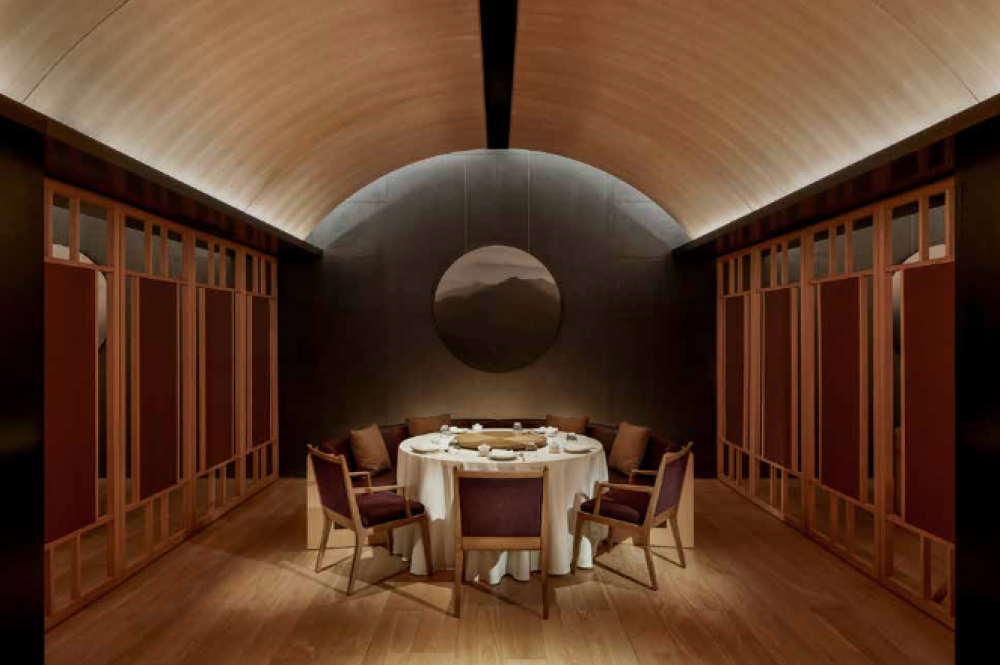
One thing to do at night for those who might not be as enthused by the prospect of copying words in a book, is to head to the spa for any number of treatments. We opt for the Longjing tea bath before heading back to our rooms for a pot of the same tea, which is native to the area, and available in every guest room.
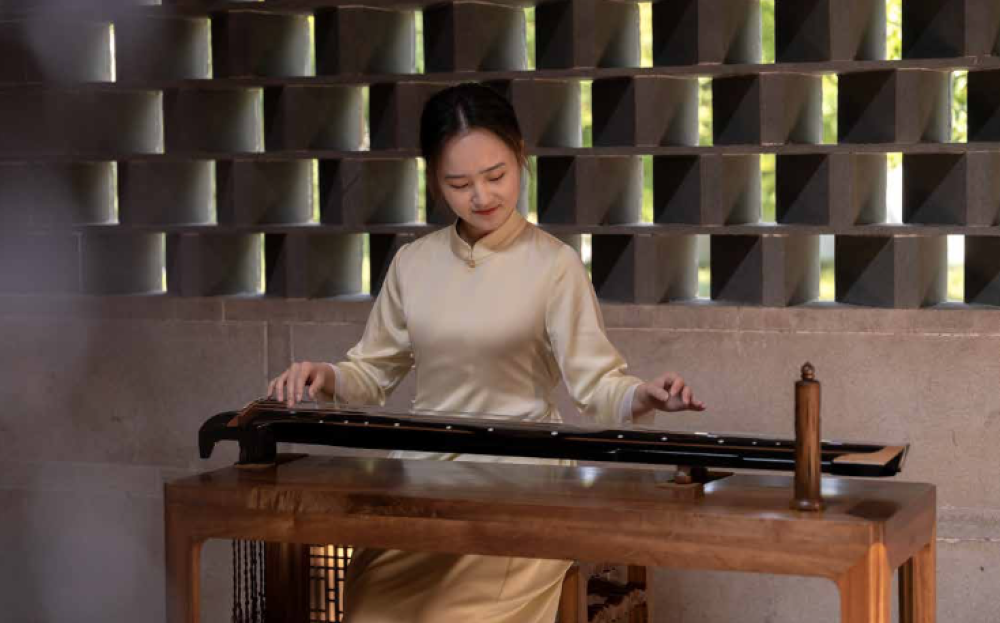
It’s a short trip but for the devout, every empty moment is an opportunity to pray for health, wealth and good fortune. We hit three of the seven temples in the area. After witnessing prayers at Yongfu Temple, we pay a visit to the Upper Tianzhu temple said to aid in forming good relations. On our last morning, we rise at the crack of dawn to hike up the hill to Linshun Temple, said to be home to the God of Wealth. No need for guesses as to what we prayed for here.
There’s so much more that could be done, not least that there are four remaining temples to make wishes at. For those looking for fun, there’s boating on West Lake and paper cutting classes. For the devout, what more can I say? The only thing that’s left to do when we leave is to promise to come back. For the winter solstice and for the Chinese New Year, when I’m told in years prior guests could have hotpot outdoors with their families as per village tradition and have the general manager lead the way to make the first wish at one of the nearby temples for an auspicious start to the year. And what could be better than that?
Also see: ‘Revenge travel’ continues in 2024

























